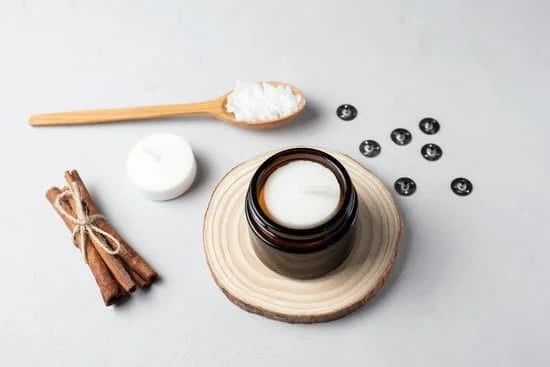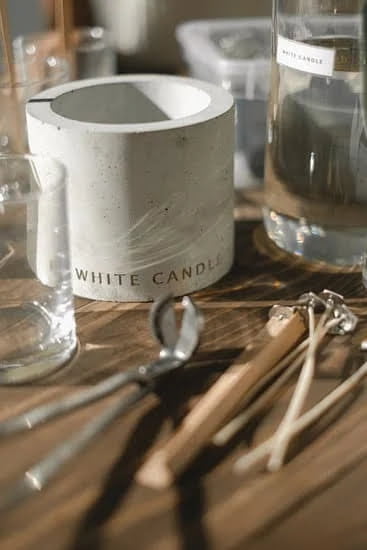Have you ever wondered what is the most scented oil for candle making? The choice of scented oil plays a crucial role in determining the overall fragrance and quality of your candles. Whether you are new to candle making or a seasoned crafter, selecting the right scented oil can make all the difference in creating a delightful sensory experience.
When it comes to scented oils for candle making, there are two main categories to consider: essential oils and fragrance oils. Essential oils are derived from natural sources like plants, flowers, and fruits, while fragrance oils are synthetic blends created to mimic specific scents. Understanding the differences between these two options can help you make an informed decision when choosing the best oil for your candles.
In this article, we will explore some of the top contenders for the most popular scented oils used in candle making. From the soothing aroma of lavender to the vibrant scents of citrus oils, we will delve into the unique qualities of each oil and how they can enhance your candle-making experience.
Whether you prefer sweet and comforting fragrances like vanilla and sandalwood or seasonal scents like pumpkin spice and peppermint, there is a wide range of options to choose from to create candles that ignite your senses.
Understanding the Difference
When it comes to choosing the most scented oil for candle making, it is essential to understand the difference between essential oils and fragrance oils. Essential oils are derived from natural sources such as plants, flowers, and fruits through processes like steam distillation or cold pressing. These oils are known for their therapeutic properties and strong scents that can provide various benefits such as relaxation, stress relief, and mood enhancement.
On the other hand, fragrance oils are synthetic compounds created in a lab to mimic specific scents. While they may not offer the same therapeutic benefits as essential oils, fragrance oils can often provide a more consistent and intense scent throw in candles.
One of the main advantages of using essential oils in candle making is their natural origin and potential health benefits. Essential oils like lavender, eucalyptus, and peppermint not only provide lovely scents but also possess aromatherapy properties that can promote relaxation, focus, or even relieve headaches.
These oils are particularly popular among individuals looking for a more holistic approach to candle making with added wellness benefits. On the other hand, fragrance oils offer a wide range of scents that may not be available naturally, allowing candle makers to get creative with unique combinations like sea breeze or fresh linen.
Top Contenders
When it comes to candle making, choosing the right scented oil is crucial to achieve the desired aroma and ambiance. With a wide variety of options available, it can be overwhelming to select the most fragrant and high-quality oils for your candles. So, what is the most scented oil for candle making? Let’s explore some of the top contenders that are popular among candle makers for their strong and long-lasting scents.
Top Contenders for Scented Oils
- Lavender Oil: Known for its soothing properties, lavender oil is a favorite among candle makers for its calming scent. It has a floral and herbaceous aroma that promotes relaxation and tranquility.
- Citrus Oils (Orange, Lemon, Grapefruit): Citrus oils are refreshing and energizing, making them perfect for candles used during the day or in workspaces. They add a zesty and invigorating scent to any space.
- Vanilla & Sandalwood Oils: Vanilla and sandalwood oils are popular choices for creating a warm and cozy atmosphere. These sweet and woody scents are comforting and ideal for creating a relaxing ambiance.
Each of these scented oils brings its unique characteristics to candle making, allowing you to play with different combinations or use them individually to create custom scents that suit your preferences. Experimenting with various scents will not only enhance your candle-making experience but also cater to different moods or occasions. Remember to always choose high-quality oils for optimal results in your candles.
The Power of Lavender
Lavender oil is one of the most popular choices when it comes to scented oils for candle making. Known for its calming and soothing properties, lavender oil is a favorite among candle enthusiasts looking to create a relaxing ambiance in their homes. The strong scent of lavender can help reduce stress and anxiety, making it a perfect choice for candles meant for unwinding after a long day.
When using lavender oil in candle making, it is important to choose high-quality essential oil to ensure the best scent throw. Here are some key benefits of using lavender oil in candles:
- Promotes relaxation and reduces stress
- Helps improve sleep quality
- Has antibacterial and antifungal properties
Aside from its therapeutic benefits, the floral and herbaceous scent of lavender adds a touch of elegance to any room. Whether used on its own or blended with other scents like vanilla or eucalyptus, lavender oil can create a serene atmosphere that promotes well-being.
Incorporating lavender-scented candles into your daily routine can have a positive impact on your overall mood and mental health. Whether you’re looking to unwind after a busy day or simply want to create a cozy atmosphere at home, the powerful scent of lavender oil can help you achieve just that.
Experimenting with different combinations and ratios of scents can also add a personal touch to your candle-making endeavors, allowing you to tailor the aroma to suit your preferences.
Citrus Sensation
Citrus oils are among the most popular choices when it comes to scented oils for candle making. Their invigorating and refreshing scents can uplift the mood and bring a sense of energy to any space.
Citrus oils are derived from the peels of citrus fruits like oranges, lemons, and limes, providing a zesty and vibrant fragrance that appeals to many people. When used in candles, citrus oils can create a bright and cheerful atmosphere, perfect for combating fatigue or creating a lively ambiance.
One of the key benefits of using citrus oils in candle making is their ability to enhance focus and concentration. The fresh and tangy aroma of citrus fruits is known for its stimulating properties that can help increase alertness and productivity.
Whether you’re working from home, studying for exams, or simply need a mental boost, lighting a citrus-scented candle can provide the perfect aromatic support. Lemon oil, in particular, is recognized for its ability to promote mental clarity and improve overall cognitive function.
In addition to their energizing properties, citrus oils are also popular for their cleansing effects. The bright and crisp scents of orange, grapefruit, or bergamot can help purify the air and eliminate unwanted odors in a room.
Citrus-scented candles are often used during cleaning routines or times when a fresh and revitalizing atmosphere is desired. With their dual benefits of promoting mental clarity and purifying the air, it’s no wonder that citrus oils are considered one of the most versatile and beloved choices for candle making enthusiasts seeking an uplifting sensory experience.
| Citrus Oil | Main Benefits |
|---|---|
| Lemon Oil | Promotes mental clarity and increases focus |
| Orange Oil | Cleanses the air and uplifts the mood |
| Bergamot Oil | Provides a calming yet uplifting effect on emotions |
Sweet Dreams
Vanilla and sandalwood oils are two popular choices for candle making due to their calming and comforting scents that can create a warm and inviting atmosphere in any space. When it comes to choosing the most scented oil for candle making, vanilla and sandalwood are often top contenders for many crafters. These oils not only offer delightful aromas but also provide additional benefits that make them stand out in the world of candle making.
Vanilla oil is known for its sweet, rich scent that can evoke feelings of nostalgia and coziness. It has a warm and comforting aroma that is perfect for creating a relaxing ambiance in your home. Sandalwood oil, on the other hand, offers a woody and earthy fragrance that is grounding and soothing. The combination of these scents in candles can help reduce stress, promote relaxation, and enhance overall well-being.
When using vanilla and sandalwood oils in candle making, it is essential to ensure that you are purchasing high-quality oils to achieve the best results. The purity of the oil will determine the strength of the scent throw when the candle is burning. Additionally, it is recommended to follow proper guidelines on how much oil to add to your wax to avoid overpowering or underwhelming fragrances in your candles.
| Oil | Main Scent Notes | Benefits |
|---|---|---|
| Vanilla Oil | Sweet, Rich | Calming, Cozy Atmosphere |
| Sandalwood Oil | Woody, Earthy | Grounding, Soothing Effects |
Seasonal Scents
When it comes to creating candles for different seasons, choosing the right scented oils can make all the difference in setting the mood and ambiance. Seasonal scents like pumpkin spice for fall and peppermint for winter evoke a sense of nostalgia and comfort that can transport us to those specific times of year. Let’s delve into the wonderful world of seasonal scents and how they can enhance your candle making experience.
Pumpkin Spice for Fall
One of the most popular seasonal scents for candles during the autumn months is pumpkin spice. This warm and inviting scent combines notes of cinnamon, nutmeg, clove, and ginger to create a cozy atmosphere reminiscent of pumpkin pies baking in the oven. Pumpkin spice candles are perfect for adding a touch of warmth to your home as the weather starts to cool down and leaves begin to change color.
Peppermint for Winter
As winter approaches, peppermint-scented candles are a favorite choice for many. The crisp and refreshing aroma of peppermint can help invigorate your senses during the cold winter months. Whether you’re looking to create a festive atmosphere during the holidays or simply enjoy the cooling effect of peppermint, these candles are sure to uplift your spirits. The combination of peppermint oil with hints of vanilla or chocolate can also add a sweet twist to the traditional scent.
Incorporating seasonal scents like pumpkin spice and peppermint into your candle making projects can bring a touch of each season into your home throughout the year. Experimenting with different combinations and ratios of oils can help you find the perfect balance that captures the essence of fall or winter in each candle you create. Remember to consider not only the scent profile but also how these seasonal scents make you feel when selecting oils for your candle making endeavors.
Tips & Tricks
Choosing the right scented oil is crucial when it comes to candle making, as the scent plays a significant role in creating the perfect ambiance. However, simply adding a few drops of scented oil to your wax may not always result in a strong and long-lasting fragrance. To ensure that you achieve maximum scent throw in your candles, here are some tips and tricks to help you properly use scented oils in your candle making process.
Proper Measurement
One of the key factors in achieving a strong and lasting scent in your candles is using the right amount of scented oil. It’s essential to follow the recommended guidelines provided by the manufacturer of the scented oil you are using.
Typically, a general rule of thumb is to use around 1 oz of fragrance oil per 1 lb of wax, but this can vary depending on the potency of the oil. Experimenting with different amounts can help you determine the ideal ratio for maximum scent throw.
Timing Is Everything
When it comes to adding scented oils to your candle wax, timing is crucial. The best time to add fragrance oils to your melted wax is when it reaches the optimal temperature for binding with the oil. Most manufacturers recommend adding scented oils when the wax temperature is between 170-185°F (77-85°C). Adding oils at too high or too low temperatures can affect the strength and quality of the fragrance in your candles.
Stirring Technique
Once you have added the scented oil to your melted wax at the correct temperature, it’s important to stir thoroughly and evenly distribute the fragrance throughout the wax. Use a stirring utensil like a wooden dowel or spoon to gently mix in the fragrance oil without creating bubbles or splashing.
Proper stirring ensures that every part of your candle contains an adequate amount of scent, resulting in a consistent and stronger fragrance throw when burned. Mastering these tips and techniques will help you create candles with an enchanting aroma that fills any room with delightful fragrances that linger long after extinguishing them.
Conclusion
In conclusion, choosing the right scented oil for candle making is crucial in creating a desirable and aromatic ambiance. Whether you opt for essential oils or fragrance oils, understanding the differences between them can help you achieve the desired scent profile for your candles. From the calming benefits of lavender to the invigorating scents of citrus oils, there are various options to choose from based on your preferences.
Experimenting with different scents can provide unique and personalized experiences for both yourself and those who enjoy your candles. Each scent has its own distinct characteristics that can evoke different emotions and memories. For those looking for a relaxing atmosphere, vanilla and sandalwood oils might be perfect choices, while seasonal scents like pumpkin spice or peppermint can bring a touch of holiday cheer to your space.
Remember, the key to a well-scented candle lies not only in choosing the right oil but also in how you use it. By following tips on proper usage, such as adding the oil at the correct temperature or using the right amount for optimal scent throw, you can ensure that your candles release their fragrance effectively.
So next time you embark on a candle making project, don’t be afraid to explore new scents and combinations to create a truly memorable sensory experience.
Frequently Asked Questions
What Is the Best Fragrance Oil for Candle Making?
The best fragrance oil for candle making ultimately depends on personal preference, but popular choices include lavender, vanilla, citrus, and sandalwood. It’s important to consider the quality and concentration of the fragrance oil to achieve a long-lasting scent in your candles.
How Do You Make a Strong Smelling Candle?
To make a strong smelling candle, it’s essential to use high-quality fragrance oils with a higher concentration of scent. Adding the fragrance oil at the correct temperature during the candle-making process and using the appropriate amount for the size of the candle can enhance its scent throw.
Proper curing time for the candles also helps develop a stronger fragrance.
Which Scent Is Best for Scented Candles?
When choosing scents for scented candles, it’s important to consider the environment where they will be used and personal preferences. Some popular options include floral scents like rose or jasmine for a calming atmosphere, fruity scents like apple or peach for a fresh feeling, or cozy scents like cinnamon or vanilla for a warm ambiance.
Experimenting with different combinations can help find the best scent for your scented candles.

Welcome to my candle making blog! In this blog, I will be sharing my tips and tricks for making candles. I will also be sharing some of my favorite recipes.





